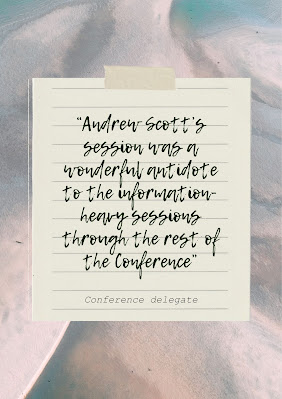One of the simplest models I use in my work is this diagram. It is a way of looking at the difference between junior and operational roles compared to senior and strategic roles in an organisation.
The basic idea is that at the very lowest level, people come in to work to do a job, and do it. As one gets more experienced and is promoted, one starts to have some responsibility for planning how the work is undertaken, and checking that it is in fact done.
And with further promotions, the proportion of time dedicated to planning and reviewing increases; until at the very top (say non-executive director) the role is entirely about planning and reviewing - and getting involved in operational activities would be mistaken.
What is interesting is inviting senior people to reflect on where they see their role - which nearly always results in their deciding that they are operating at a lower level than they should be. That is, they are doing too much, at the expense of planning and (in particular) reviewing.
They tell me there are many reasons for this, which include:
- Doing is what they are good at, and indeed has led to their promotion;
- Doing provides an immediate and visible sense of accomplishment;
- They have a strong habit about doing, and feel guilty when they stop to think.
However, they recognise that they are effectively demoting themselves; and also being overpaid for doing work that could and should be done by someone drawing a lower salary. Moreover, they are demoting, rather than growing, those below them in the structure.
Ideally, one encourages those below to work at a higher, rather than a lower, level; so that even those at entry-level are given some responsibility for planning and reviewing. Of course, under pressure, organisations tend to do the reverse: seek to increase productivity by micro-management.
Because the approach I advocate clearly means that less work gets done, if those at the bottom are 'doing' less. However, my contention is that it will probably be less unnecessary work. For if proper planning and reviewing take place, people will learn as they go - errors and busy-work will decrease. Whereas micro-management may provoke an increase of activity but it is a mistake to equate that with productive activity. And there are other consequences: negative impacts in terms of motivation, well-being and retention of good people that will undermine long-term productivity.
Further, this model helps people to understand what it means to be 'more strategic' - a term that is often bandied about without much definition. Dedicating proper time to serious planning, and then also (and possibly more counter-culturally) to serious review is the start of a more strategic approach. Because serious review will include questions such as:
- Did we actually do what we planned to do (and if not, why not)?
- Did our activity actually deliver the results we desired (and if not, why not)?
- What are we learning?
and the answers to these questions inform our planning, which again will have some fairly simple questions that set and adjust strategic direction:
- Where are we now (honestly...)?
- Where do we want to be in the medium- to long-term?
- What do we need to do to get there?
But of course, such thinking is difficult and offers no short-term sense of accomplishment, so it is much easier just to get on and do something...























